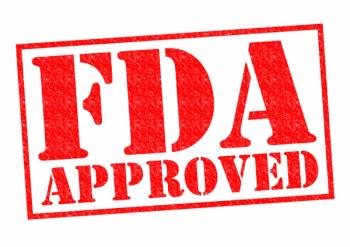
The Avandia Saga: AJMC Presents Data and Discussion
Vets Study Shows Drop in Usage May Be Linked to Higher Glucose Levels; Former FDA Regulator, Leading Clinician Say 'Mea Culpa' Part of Cautionary Tale
The Avandia Saga: AJMC Presents Data and Discussion
Vets Study Shows Drop in Usage May Be Linked to Higher Glucose Levels;
Former FDA Regulator, Leading Clinician Say ‘Mea Culpa’ Part of Cautionary Tale
PLAINSBORO, N.J. — Avandia’s roller coaster ride from superstar diabetes drug to pariah and litigation target will have far-reaching implications for clinical practice and drug development, even as the health effects of its sudden exit from the market are just now becoming clear.
AJMC’s study comes just three months after an FDA Advisory Committee voted June 6, 2013, that Avandia may not pose cardiovascular risks after all, based on a review by researchers at Duke Clinical Research Institute. But the AJMC results, and the June vote, are unlikely to make Avandia viable in the United States, according to two experts interviewed for the September issue of AJMC’s sister publication, Evidenced-Based Diabetes Management.
On October 4, 2007, the Veterans’ Administration Medical Advisory Panel pulled the drug from the VA formulary. As elsewhere, when Avandia was substituted, it was typically replaced with Actos (pioglitazone), which was its chief competitor at the time and, prior to the NEJM article, was not part of the VA formulary. As the AJMC study shows, however, Avandia was not always replaced.
AJMC Study: After Removal, Some Loss of Glucose Control
The study, led by Sherrie L. Aspinall, PharmD, of the University of Pittsburgh School of Pharmacy, concludes that glucose control may have declined among those who stopped taking Avandia.
On April 1, 2007, 95,539 veterans had a prescription for rosiglitazone. At baseline, their mean A1C was 7.4 percent, and 82.1 percent of the patients received other medications alongside rosiglitazone. The drug was the first-line therapy for 17.9 percent, second-line in 35.6 percent, third-line in 26.6 percent, used with insulin in 19.6 percent and rarely prescribed in other configurations (0.3 percent).
By the end of the study period on June 30, 2008, 82,797 patients, or 86.7 percent, had stopped taking rosiglitazone. Their baseline characteristics were clinically similar to the overall group, although they were less likely to be African-American, less likely to have a baseline A1C above 9% or to receive insulin concurrently.
According to the AJMC article, “For patients who had rosiglitazone replaced, (typically with pioglitazone) 29 percent received another medication during the time periods before and after the FDA warning. The FDA warning increased the rosiglitazone discontinuation rate, but did not markedly influence the rate of replacement of rosiglitazone with other medications.” This replacement rate soared to 37 percent when Avandia was taken from the formulary and replaced with Actos. Those receiving the drug as a first-line therapy were most likely to be given a replacement.
Among those who stopped taking Avandia and received a replacement drug, mean A1C values before and afterward were 7.4 and 7.5 percent, respectively. For former Avandia patients who received no replacement, A1C values rose from 7.4 percent to 7.9 percent. Among the small group that remained on the drug, mean A1C values at the start and end of the study period were both 7.3 percent. Among patients not receiving insulin, mean levels were 7.3 percent at the start and 7.5 percent with a replacement drug, compared to 7.2 percent and 7.7 percent for those not receiving a replacement. Among those receiving insulin, A1C went from 7.9 to 8.0 percent with a replacement for Avandia, compared to insulin patients who went from 7.9 to 8.3 percent without an Avandia substitute.
Legacy of FDA’s Handling of Avandia
In
A spokeswoman for GlaxoSmithKline, the manufacturer of Avandia, told EBDM there were no plans to market the drug in the United States. Still, Fleming said, the FDA’s June meeting was not pointless. “The review was done not so much to save or damn the drug, but rather to have a thoughtful look back at what happened, recognizing that the way the saga unfolded had negative effects on the environment in which drugs are developed,” he said.
Diabetes treatment has advanced to new classes of drugs, including glucagon-like peptide receptor agonists (GLP-1), dipeptidyl peptidase inhibitors (DDP-IVs) and, sodium glucose co-transporter 2 inhibitors (SGLT-2), the first of which won approval in March under the brand name Invokana.
Both Fleming and Ovalle said the Avandia experience has changed the regulatory process, and for Ovalle, his own interactions with patients. Fleming said, “One of the key lessons learned is that long-term clinical outcomes do need to be verified and not just assumed. Rather than just relying on treating a number such as blood sugar, we now more often look at the longer term measure of a drug in preventing complications of a disease.”
Ovalle told EBDM he now warns patients taking a new medication that the drug has been tested and that it appears to be safe, but there is a possibility of unknown side effects. “That is something I never did before,” he said.
CONTACT: Nicole Beagin (609) 716-7777 x 131 Follow us on Twitter @AJMC_ Journal @EBDiabetes
Newsletter
Stay ahead of policy, cost, and value—subscribe to AJMC for expert insights at the intersection of clinical care and health economics.





























































